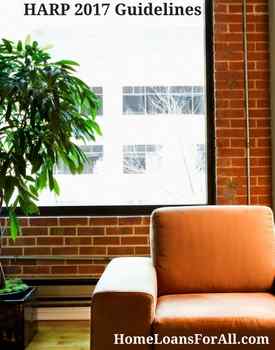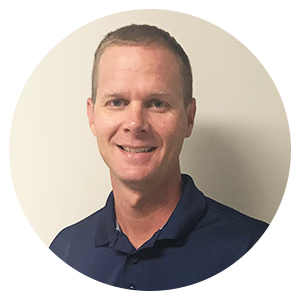 The Home Affordable Refinance program, (HARP) was initiated in March of 2009 by president Obama’s administration. The program was created to allow underwater borrowers to refinance their mortgages. Underwater homeowners are those whose mortgage balances exceed their property values. Properties owned by Fannie Mae and Freddie Mac back and guarantee the refinance loans for homeowners. With this backing, it is common and sometimes can be a simple process to get a HARP refinance done. Unfortunately, due to the change in government, the program comes to and end on September 30th, 2017.
The Home Affordable Refinance program, (HARP) was initiated in March of 2009 by president Obama’s administration. The program was created to allow underwater borrowers to refinance their mortgages. Underwater homeowners are those whose mortgage balances exceed their property values. Properties owned by Fannie Mae and Freddie Mac back and guarantee the refinance loans for homeowners. With this backing, it is common and sometimes can be a simple process to get a HARP refinance done. Unfortunately, due to the change in government, the program comes to and end on September 30th, 2017.
Especially due to the fact that these loans are backed by government-controlled entities, policies and laws are changed by day, and hence, the change in the guidelines to the HARP loan program over time. In 2011, the guidelines changed from how they were in the previous years and some have changed from then to date. Below, we look at the guidelines as at 2017.
HARP Loan Program Eligibility
A homeowner whose property is backed by Fannie Mae or Freddie Mac, perfectly fits to get the HARP refinance loan. The HARP loans not only cover primary homes, but also vacation and investment loans. In addition, the homeowner’s loan must have been undertaken on or before 31st May, 2009. Therefore, the most fundamental condition to be met, is being in the Fannie Mae or Freddie Mac websites. This means that loans backed or guaranteed by other bodies whether government or private automatically become ineligible for the HARP loans. However, other government backed loans, that is, the FHA and VA loans all have their own refinance programs for underwater mortgages.
Your lender, amount of loan or loan terms does not really matter and cannot stand between you and your HARP loan. It is important to note that, you are not restricted to use your initial mortgage lender for the HARP loan program. Different lenders have different requirements for the HARP loan, and so a homeowner should go for the very best terms in the market.
Income qualifications
No income verification is required for you to qualify for the HARP loan. The program assumes that, you already qualified for the initial loan and therefore, no need to verify again. This means that you can be unemployed with no income but still qualify for the HARP loan. The only exception where the lender may re-qualify your income is when the aggregate of the new principal and the interest rate increase by more than 20%. Otherwise, income qualification is not required, either by Fannie Mae or Freddie Mac.
Despite of this, lenders may have their own guidelines and stricter conditions requiring you to prove your income capabilities. This is because, at the end of the day you are required to service the loan. In this case, you can use your savings to qualify, if you do not have an income inflow channel.
Bankruptcy
As part of the change in guidelines in 2011, HARP program allowed homeowners who have filled for bankruptcy to refinance their mortgages through the program. Scrapping of the requirement has made bankruptcy and foreclosure not an obstacle in accessing the HARP loan program. This came as a huge plus to the many struggling homeowners who had hit rock bottom financially.
Mortgage insurance
Whether your previous loan has a mortgage insurance premium attached to it or not should not be a factor to determine your access to the HARP loans. Many lenders however, use this as a factor to hinder many homeowners applying for HARP loans from getting the loans. If a lender insists on this, approach another lender for your HARP loan.
HARP mortgage costs
After being approved for a HARP loan, the same standard and market loan costs apply. These are relative to different lenders. The terms of the loan will depend on the cost that will be incurred for the loan. No additional cost is and should be incurred for the loan. Normally the lower the interest rate, the more expensive it is to service the loan.
Credit score
The HARP program loans do not require you to have a set minimum credit score for you to qualify. This is unlike other private lenders who require a minimum of 580 credit score. This allows more homeowners access these loans. In addition, the backing of the government through Fannie Mae or Freddie Mac makes lenders not to really consider this. However, different lenders may set their minimum credit score requirements as per their own standards. Look and shop around for lenders that fit your credit score, because they are there in the market.
Loan to value (LTV)
With the HARP loans, there is no maximum loan to value for your refinance amount. This allows homeowners to take up as much loan as their lenders can avail to them. Given that the use of the loan is not limited to just a primary home, homeowners are able to refinance investment and other property which require a lot of money.
The HARP loan program is hence, one of the best refinance options available to homeowners today. All you have to do is make sure to be backed by Fannie Mae or Freddie Mac and that’s pretty much it. It is advisable also, to seek additional information of all refinance options available to you before making the decision. Talk to your lender today to determine if they have the HARP refinance loan option.











